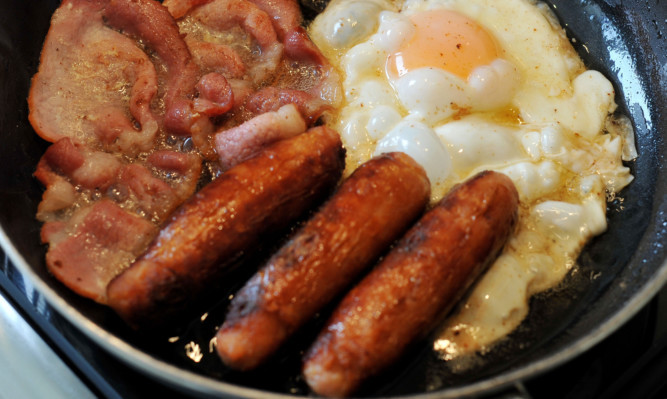Global health experts have found that processed meat such as hot dogs, ham and sausages can cause bowel cancer.
Red meat is also “probably” carcinogenic, with associations mainly with bowel cancer, but also with pancreatic cancer and prostate cancer, according to a World Health Organisation (WHO) report.
The International Agency for Research on Cancer (IARC), the cancer agency of the WHO, said: “Processed meat was classified as carcinogenic to humans, based on sufficient evidence in humans that the consumption of processed meat causes colorectal cancer.”
Experts found that each 50 gram portion of processed meat eaten daily increases the risk of colorectal cancer, also known as bowel cancer, by 18%.
Processed meat refers to meat that has been transformed through salting, curing, fermentation, smoking, or other processes to enhance flavour or improve preservation.
Most processed meats contain pork or beef, but processed meats may also contain other red meats, poultry, offal, or meat by-products such as blood.
Examples of processed meat include hot dogs (frankfurters), ham, sausages, corned beef, and beef jerky as well as canned meat and meat-based preparations and sauces.
The 22 experts from 10 countries, convened by the IARC Monographs Programme, classified the consumption of red meat as “probably carcinogenic to humans”, based on limited evidence that the consumption of red meat causes cancer in humans and “strong mechanistic evidence supporting a carcinogenic effect”.
Dr Kurt Straif, head of the IARC Monographs Programme, said: “For an individual, the risk of developing colorectal cancer because of their consumption of processed meat remains small, but this risk increases with the amount of meat consumed.
“In view of the large number of people who consume processed meat, the global impact on cancer incidence is of public health importance.”
Dr Christopher Wild, director of IARC, said: “These findings further support current public health recommendations to limit intake of meat.
“At the same time, red meat has nutritional value. Therefore, these results are important in enabling governments and international regulatory agencies to conduct risk assessments, in order to balance the risks and benefits of eating red meat and processed meat and to provide the best possible dietary recommendations.”
The IARC group considered more than 800 studies that investigated associations of more than a dozen types of cancer with the consumption of red meat or processed meat in many countries and populations with diverse diets.
The most influential evidence came from large prospective cohort studies conducted over the past 20 years.
The consumption of meat varies greatly between countries, from a few per cent to up to 100% of people eating red meat, and somewhat lower proportions eating processed meat, the report said.
